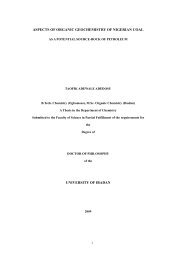aspects of organic geochemistry of nigerian coal university of ibadan
aspects of organic geochemistry of nigerian coal university of ibadan
aspects of organic geochemistry of nigerian coal university of ibadan
Create successful ePaper yourself
Turn your PDF publications into a flip-book with our unique Google optimized e-Paper software.
These isoprenoid ketones could be produced from free phytol by bacteria degradation<br />
and photosynthesized oxidation, photosynthesized oxidation <strong>of</strong> some isoprenoids<br />
hydrocarbons and during photo degradation <strong>of</strong> α-chlorophyll (Tuo and Li, 2005).<br />
The homologous series <strong>of</strong> alkan-2-ones is generally found with an odd carbon number<br />
predominance and its source is likely microbial (Leif and Simoneit, 1995; Bai et al.,<br />
2006). It has been proposed that n-alkan-2-ones are formed by microbially mediated<br />
β-oxidation <strong>of</strong> alkanes (Simoneit et al., 1979; Cranwell et al., 1987;<br />
Rieley et al., 1991) or from β-oxidation and decarboxylation <strong>of</strong> n-fatty acids<br />
(Volkman et al., 1983). n-Alkan-2-ones maximizing at C25 or C27 have been reported<br />
in higher plants,microalgae and phytoplankton(Gonzalez et al., 2003; Bai et al., 2006).<br />
2.1.5 Sesquiterpenoids<br />
Sesquiterpanes primarily those based on the cadinane skeleton, with their aromatic<br />
derivatives, are found in many crude oils from inferred deltaic source rock<br />
(Van Aarssen et al., 1990, 1992). Cadinanes (structure VI) and bisabolanes belong to<br />
the most common sesquiterpenoids in the plant kingdom and are thus non-specific<br />
(Otto and Wilde, 2001). Derivatives <strong>of</strong> longifolane, santalane, and himachalane were<br />
reported from conifer species <strong>of</strong> the Pinaceae, Cupressaceae, and Podocarpaceae<br />
(Otto and Wilde, 2001). Also, aromatic sesquiterpenoids, dihydro-ar-curcumene,<br />
cuparene, calamene, cadina-1(10),6,8-triene and cadalene have been reported from<br />
various origin including, higher plants, conifers, dammar resin, Dipterocarpacceae<br />
and Cupressaceae sensu lato (Haberer et al., 2006),thereby supporting its non-<br />
specificity. However, there are some specific sesquiterpenes like cuparene, which are<br />
characteristic biomarkers for the conifer family Cupressaceae sensu lato including the<br />
genera, Cupressus, Thuja and Juniperus (Grantham and Douglas, 1980; Otto and<br />
Wilde, 2001) or sativene, a specific marker for Pinaceae (Otto and Wilde, 2001).<br />
Sesquiterpenoids are valuable chemosystematic markers for extant conifers.<br />
Examples include sesquiterpenoid classes <strong>of</strong> the cedrane, cuparane, valencane and<br />
thujospane.<br />
36


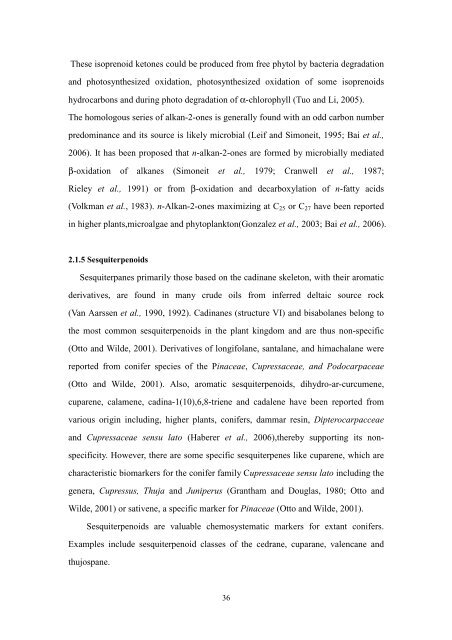

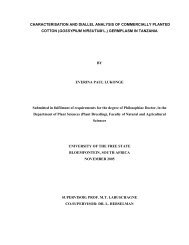


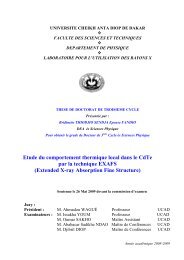
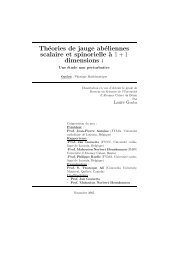


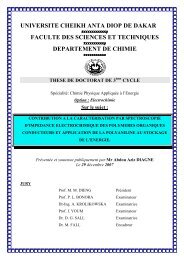
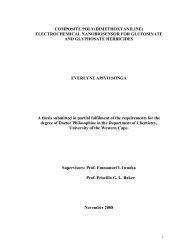


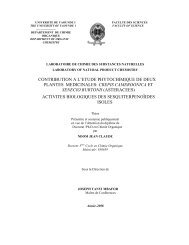
![SYNTHESIS AND ANTI-HIV ACTIVITY OF [d4U]-SPACER-[HI-236 ...](https://img.yumpu.com/30883288/1/190x245/synthesis-and-anti-hiv-activity-of-d4u-spacer-hi-236-.jpg?quality=85)
